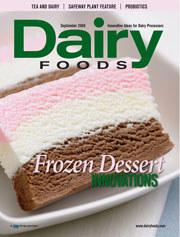
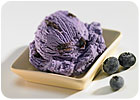
Whole fruits and functional ingredients are becoming more common in today's new generation of frozen desserts.
Photo courtesy of Kerry Americas
Photo courtesy of Kerry Americas
In Angier, N.C., ice cream parlor Sunni Sky's made national news this summer when the scoop shop's proprietor Scott Wilson began making customers sign a waiver before tasting the new Cold Sweat flavor. Made with three kinds of pepper and two kinds of hot sauce, waiver signers have described Cold Sweat as "fire, with a side of fire."
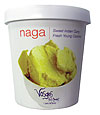
The Vosges Haut-Chocolat mission is to create a luxury chocolate experience rooted in a sensory journey of bringing about awareness to indigenous cultures through the exploration of spices, herbs, roots, flowers, fruits, nuts, chocolate and the obscure.



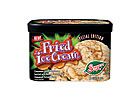
Ethnic-inspired flavor combinations are getting more adventurous and creative. Processing technologies are enabling ice cream manufacturers to experiment with new textures and product consistencies.
Frozen yogurt and frankfurters
In addition to experimenting with flavors, formulators are exploring innovative technologies and functional ingredients. For example, Salt Lake City-based TCBY has rolled out a new line of frozen yogurt (available by the scoop in shops or in convenient, pre-packed quarts for at-home enjoyment) that is a true first-of-its-kind in the category.Made with either 96% fat-free or no-sugar-added frozen yogurt, the new product line contains seven live-and-active cultures:Lactobacillus acidophilus, Lactobacillus bulgaricus, Lactobacillus lactis, Lactobacillus paracasei, Lactobacillus rhamnosis, Bifidobacterium lactisandStreptococcus thermophilus.
TCBY's new line of hand-scooped frozen yogurt also provides a healthy dose of calcium, protein and vitamin D. Flavor varieties include Butter Pecan, Chocolate Chocolate, Chocolate Chunk Cookie Dough, Cookies & Cream, Mint Chocolate Chunk, Pralines & Cream, Strawberries & Cream and Vanilla Bean.

Ethnic-inspired flavor combinations are getting more adventurous and creative. Processing technologies are enabling ice cream manufacturers to experiment with new textures and product consistencies.
And now, using innovative flavoring technology, the cereal concept called Freeze N' Flakes enables customers to unleash their favorite cereal flavors in a vanilla-flavored soft-serve frozen yogurt. Cereal-flavored toppings are injected with a burst of air into the soft-serve frozen yogurt just seconds before dispensing into a serving cup. Customers can then add other toppings such as fruit and syrups.
Soft-serve is making a comeback, at retail, too. And innovative technology enables manufacturers to package soft-serve and have it retain its soft, smooth consistency. For example, Good Humor® Soft & Creamy comes in 10 flavors.
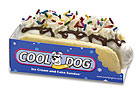
Cool Dog is the only ice cream product that is rounded on all sides and has no stick.
The technology offers numerous advantages for the ice cream producer, according to the company, which uses this innovation to manufacture a unique frozen novelty where ice cream looks like a hot dog enclosed in a cake bun. Whipped cream, chocolate syrup and rainbow sprinkles are the condiments.
According to the company's president, Peter Franklin, the extremely thin and flexible molding materials conform to various shapes, providing the opportunity for an array of new and exciting frozen dessert products in the near future. Furthermore, in an environment of rising energy costs, Film Mold technology freezes ice cream mix almost instantly, requiring dramatically less energy to freeze mix than stainless steel molds. Because Film Molds are disposable, they also eliminate the additional energy costs associated with constant reuse and sterilization of stainless steel.

Indulgence reigns when it comes pre-portioned in individual servings.
Gourmet portions
As in many food categories, pre-packaged single-serve portions are becoming more popular, as they appeal to consumers looking to manage caloric intake. These portions are being taken to extreme as in the case of Bubbies® from Bubbies Homemade Ice Cream & Desserts, Aiea, Hawaii. The company specializes in mochi ice cream, which is creamy gourmet ice cream wrapped in a sweetened rice confection. The result is a bite-sized, 1.25-oz ball that is described as the "perfect ending to an amazing meal or anytime for a gourmet sweet snack."Bubbies come in 18 flavors, including some unique options such as Azuki Bean, Green Tea, Guava, Passion Fruit, Sakura (vanilla ice cream surrounded by a cherry blossom flavored naturally pastel pink colored mochi) and Tiramisu.
Innovation is alive and thriving in the frozen dairy category. Watch out vanilla and chocolate!
Sidebar: Antifreeze in Ice Cream
Once referred to as "antifreeze" proteins (AFP), ice structuring proteins (ISP) are the talk of the ice cream industry, with The Netherlands-headquartered Unilever fueling the discussions. The focus is on an ISP preparation obtained from the yeastSaccharomyces cerevisiae, which has been encoded to carry the gene from ISP derived from ocean pout (Macrozoarces americanus).The ocean pout can be found in the western North Atlantic Ocean. It is a bottom-dwelling fish that occupies a wide range of temperatures including sub-zero environments. To survive this cold, they produce antifreeze proteins, which concentrate in their plasma. AFPs are also produced as a specialized adaptation by other fish, tortoises, insects, plants and bacteria. Basically, the AFPs lower the freezing point of a solution relative to the melting point. They are also capable of preventing the recrystallization of ice, which is a thermodynamically favored process in ice that involves the growth of large ice crystals at the expense of smaller ice crystals. This is why the ice cream industry is interested in ISPs, aka AFPs.
In October 2002, Good Humor-Breyers, a Unilever company, notified FDA that ISP preparation is generally recognized as safe (GRAS) through scientific procedures for use as a texturizer in frozen novelty desserts at a level of 0.01% in the finished product. Unilever explains that there are at least 12 different types of ISPs that have been found in the serum of ocean pout and separated by high performance liquid chromatography (HPLC). Unilever says that one of these HPLC-purified ISPs has application in frozen novelties to assist with ice structure development. Unilever notes that it would not be practicable to obtain sufficient quantities directly from ocean pout; therefore, the company developed a bioengineered, genetically stable strain.
Unilever's multi-patented ISP preparation is produced using standard industrial-scale biotechnology processes and standard food ingredients. The protein is secreted from the yeast cells into the growth medium. The yeast cells are then separated from the medium by filtration, and the ISP is concentrated and purified by ultrafiltration. Additional details can be found in GRAS Notice No. GRN 000117.
Since this GRAS notification, Good Humor-Breyers has used ISP in some of its U.S. frozen novelties and appropriately labels it as such in the ingredient legend. It is also used in some of the company's products in Australia and New Zealand.
Unilever believes ISP is the future in ice cream, as do some biotechnology companies that have developed their own unique process of producing ISP. For example, Ice BioTech Inc., Flamborough, Ontario, Canada (www.icebiotech.com), is extracting ISP directly from the grass of winter wheat, where it has been generated by this plant's exposure to sub-freezing temperatures. This technology has an advantage over Unilever's ISP because it is derived directly from nature and therefore may qualify as a natural ingredient. Another company, A/F Protein Inc. (www.afprotein.com), Waltham, Mass., uses a recombinant DNA approach using DNA from arctic fish. This company, too, describes its ISP as being natural.
"It is very probable that ‘ice structuring protein' will appear on ingredient legends of many types of frozen desserts during the next few years," predicts Bruce Tharp, ice cream industry consultant and president of Tharp's Food Technology, Wayne, Penn.
Sidebar: Is Wendy's Onto Something?
While customers of hamburger queen Wendy's have three mix-in options (M&Ms™, Butterfinger™ and Oreo™) that they can add to their Frosty, surprisingly, many people are choosing a more unusual taste sensation."In preparing to launch our new Vanilla Frosty, we got curious about something we've been hearing about: people dipping French fries into Frostys," says Ian Rowden, executive v.p. and CMO of the Dublin, Ohio restaurant chain. "We knew this phenomenon was going on, but we certainly didn't realize the extent. It demonstrates how people today are personalizing their food, and are seeking out unexpected flavor combinations-hot and cold, sweet and salty and so forth."
Company research indicates that 26% of adults 18 or older have dipped French fries into a Frosty, or know someone who has. Americans ages 18 to 34 years old are more likely than their counterparts to indulge.